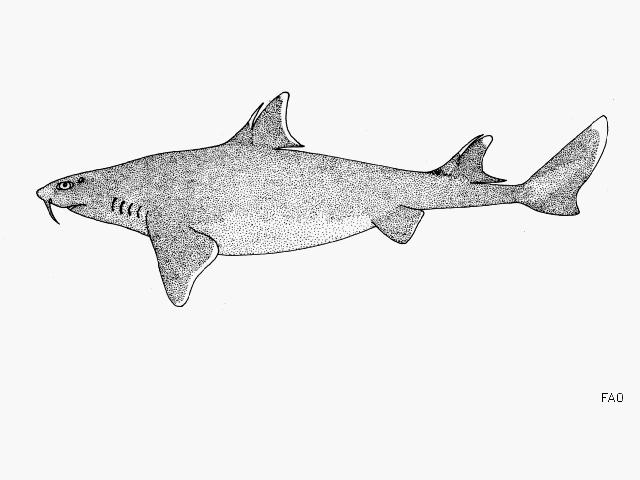Cirrhigaleus barbifer
Tanaka, 1912
Mandarin dogfish
Classification: Elasmobranchii Squaliformes Squalidae
Reference of the original description
Figures and descriptions of the fishes of Japan, including the Riukiu Islands, Bonin Islands, Formosa, Kurile Islands, Korea, and southern Sakhalin. Figures and Descriptions of the Fishes of Japan, 9: 145–164
Figures and descriptions of the fishes of Japan, including the Riukiu Islands, Bonin Islands, Formosa, Kurile Islands, Korea, and southern Sakhalin. Figures and Descriptions of the Fishes of Japan, 9: 145–164
Synonyms / new combinations and misspellings
Cirrhigaleus barbulifer, Phaenopogon barbulifer, Squalus barbifer
Cirrhigaleus barbulifer, Phaenopogon barbulifer, Squalus barbifer
Types
Cirrhigaleus barbifer
Holotype: ZUMT: 3397; Neotype: HUMZ: 197852;
Phaenopogon barbulifer
Holotype: SU: 13901
Cirrhigaleus barbifer
Holotype: ZUMT: 3397; Neotype: HUMZ: 197852;
Phaenopogon barbulifer
Holotype: SU: 13901
Description :
Citation: Cirrhigaleus barbifer Tanaka, 1912: In: Database of modern sharks, rays and chimaeras, www.shark-references.com, World Wide Web electronic publication, Version 12/2025
Please send your images of "Cirrhigaleus barbifer" to info@shark-references.com

Cirrhigaleus barbifer Tanaka, 1912, © FAO, www.fish-base.org

Cirrhigaleus barbifer Tanaka, 1912, © FAO, www.fish-base.org
Common names
 Tollo mandarín,
Tollo mandarín,  Squale moustache,
Squale moustache,  Mandarin dogfish,
Mandarin dogfish,  Mandarin shark
Mandarin shark
 Tollo mandarín,
Tollo mandarín,  Squale moustache,
Squale moustache,  Mandarin dogfish,
Mandarin dogfish,  Mandarin shark
Mandarin shark
Distribution
Western Pacific: southeastern Honshu in Japan, New South Wales in Australia, New Zealand, and Torres Island in Vanuatu. First record: 2013: Western Australia (Rottnest Island in Western Australia (32°03′S 115°21′E, WAM P.33376.001: one 986 mm TL mature male, one 1255 mm TL gravid female with 22 embryos) [17964]; Source: www.gbif.org
Western Pacific: southeastern Honshu in Japan, New South Wales in Australia, New Zealand, and Torres Island in Vanuatu. First record: 2013: Western Australia (Rottnest Island in Western Australia (32°03′S 115°21′E, WAM P.33376.001: one 986 mm TL mature male, one 1255 mm TL gravid female with 22 embryos) [17964]; Source: www.gbif.org
Human uses
fisheries: of no interest
fisheries: of no interest
Biology
Ovoviviparous with 10 young in a litter (5 per uterus). Found on the uppermost continental and insular slopes, and probably the outer continental-insular shelves.. Probably feeds on bottom fishes and some invertebrates.
Ovoviviparous with 10 young in a litter (5 per uterus). Found on the uppermost continental and insular slopes, and probably the outer continental-insular shelves.. Probably feeds on bottom fishes and some invertebrates.
Remarks
shark-references Species-ID=1467;
shark-references Species-ID=1467;

















